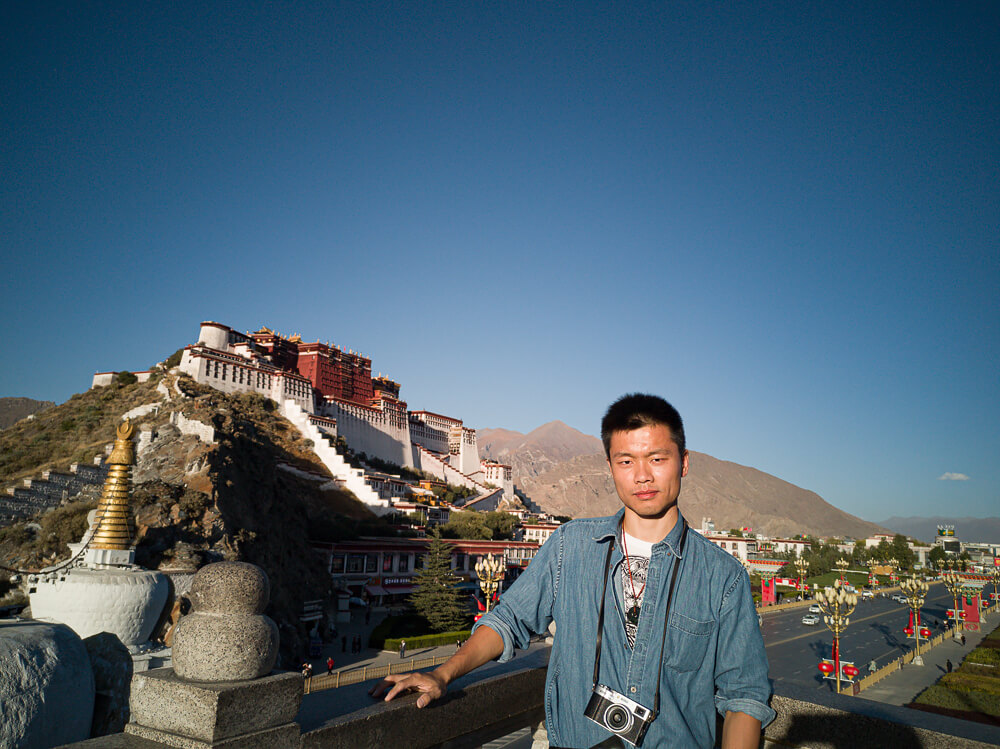Cao Luning is a street photographer who lives in Nanjing, Jiangsu Province, China, a city of 8 million people. He only started to do photography 3 years ago and all learnt by himself.
For Cao Luning, photography is a means of getting to know and expressing himself. Just like the saying "You are what you read", he also believes "You are what you shoot". He's extremely crazy about Street, Travel and Documentary photography, and the uncertainty and infinite possibilities of them fascinate him. They are just similar to life, you never know what you are going to get tomorrow. You may capture some nice shots, or you might come back empty-handed. Street photographer is his identity.
Cao Luning is a street wanderer and likes to watch people. He can linger on the streets all day long without feeling tired or fed up. When he shoots, he focuses on the serendipity of specific colors, light and shadows, gestures and the implied humor of scenes. Cao Luning reckons framing is crucial to a good photograph, and he's been greatly influenced by Henri Cartier-Bresson and his "The Decisive Moment Theory", which He thinks is something that every photographer should pay attention to. His mentors are Mangum Photographer Alex Webb and his wife Rebecca Norris Webb, and they both helped him a lot in developing his own vision. In his opinion, given different situations and scenarios, a good street photographer should swiftly apply different compositions that best suit the scenes, instead of using one or two methods for all situations, because that's not a creative process, it's just mechanical repetitions.
Statement
I'm a street photographer who started to do photography 3 years ago.
For me, photography is a means of getting to know and expressing myself. Just like the saying "You are what you read", I also believe "You are what you shoot". I'm extremely crazy about Street, Travel and Documentary photography, and the uncertainty and infinite possibilities of them fascinate me. They are just similar to life, you never know what you are going to get tomorrow. You may capture many nice shots, or you might come back empty-handed.
I'm a street wanderer and I like to watch people. I can linger on the streets all day long without feeling tired or fed up. When I shoot, I focus on the serendipity of specific colors, light and shadows, gestures and the implied humor of scenes. I reckon framing is crucial to a good photograph, and I've been greatly influenced by Henri Cartier-Bresson and his "The Decisive Moment Theory", which I think is something that every photographer should pay attention to. In my opinion, given different situations and scenarios, a good street photographer should swiftly apply different compositions that best suit the scenes, instead of using one or two methods for all situations, because that's not a creative process, it's just mechanical repetitions.
Most of the works I submitted were shot during the pandemic in China.. On January 2020, The New Coronavirus Pneumonia (or COVID-19) outbroke in Wuhan, Hubei Province in China and soon spread all over the country. As a result, the Chinese government locked down the whole country, stopped all production activities, restricted intercity transportation, and people were advised not to go outside.
I live in Nanjing, Jiangsu Province, a city of 8 million people, and when it was shut down, it was a bit like a ghost town in the beginning, not completely empty, but hard to find people on the streets. However, I found out by the Yangtze River and some parks, there are some citizens. People would go fishing, do sports, exercise or simply relax. So I often go to those places with my camera, trying to capture their life under the influence of Coronavirus.
The virus has pressed the pause button for most of us, though it's not a good thing, objectively speaking, it gives us a good opportunity to look inside and review our living states. It offers us a window to slow down and appreciate all the good and beautiful things around us as well. In the meantime, we are also given the possibility to do the things that we always wanted to do. We should cherish it and live in the moment, despite how dreadful the epidemic situation might be, life has to go on.
I hope you'll enjoy my works and get to know me better by them.
